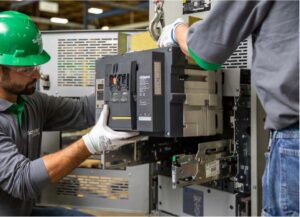What is so significant about sustainability in building designs? It is the philosophy to develop an integrated system that can meet needs over the long term, such as power and water, while minimizing both financial and environmental costs. This concept of sustainable design has many aspects, including social, economic, and environmental factors.
The principles of sustainability in building design are relatively simple: use less energy, waste less water, and reduce the use of harmful chemicals. These three main principles will help you create a home that lasts longer and uses fewer resources to build. By following these simple principles, you can ensure that your new home is as sustainable as possible from day one.
1. Energy efficiency
To reduce the amount of energy used, you must first consider how much energy is being consumed. The next step is to reduce energy consumption in the first place or at least manage it better. These strategies include using renewable energy sources and natural light where possible; insulating well so that heat loss through and windows is limited; making sure appliances are efficient, such as replacing old refrigerators with energy star models; installing motion sensors where appropriate (e.g., lights in a hallway), which can help ensure lights are only turned on when needed.
2. Water conservation
Water efficiency is key in ensuring sustainability in building design since it is becoming an increasingly rare resource. According to the United Nations, more than 1.2 billion people worldwide live without access to safe drinking water, while 2.6 billion lack adequate sanitation facilities. Moreover, the future availability of fresh water is predicted to become even more limited due to climate change and population growth. In this context, building owners and operators are increasingly aware of the need for water efficiency to preserve our resources and reduce our environmental impact.
3. Sustainable building materials
Sustainable materials can be reused, recycled, or composted after use. They don’t contain any toxic chemicals, are easily sourced, and extracted from the earth, and are renewable. In addition, sustainable materials also have other benefits, such as durability and strength.
The most commonly used sustainable building materials include clay bricks, concrete blocks and tiles, glass blocks, granite slabs, slate shingles, fibre cement siding panels, and cedar shakes. There are also many other types of building materials that are considered sustainable, including recycled plastic lumber (RPL), bamboo flooring, bamboo plywood, and bamboo hardwoods like Ipe (ironwood).
Moreover, it is recommended to choose sustainable building materials that can be easily repaired, if necessary, and are less likely to need replacement in the future. Consider selecting materials with greater durability (such as concrete), which will last longer than standard frame lumber or plywood construction. If possible, consider using recycled products or reclaimed materials in your designs—these require less energy to produce and eliminate waste at every step of their lifecycle.
The role of design in sustainability
Design plays an important role in sustainability by incorporating principles of sustainable architecture. Applying sustainable design principles in architecture ensures that buildings are energy efficient and resource-conscious. These principles guide the creation of structures that minimize their ecological footprint, enhance resource efficiency, and promote long-term sustainability, contributing to a healthier environment and reduced operational costs.
Benefits of sustainability in building design
By now, it’s no secret that buildings have a huge impact on the environment. As per a study by the Natural Resources Defense Council (NRDC), buildings are responsible for 40 percent of the world’s energy use and carbon emissions, which is more than every car, train, and airplane combined.
Sustainable buildings are not only good for the environment, but they are also beneficial for businesses. They use less energy, water, and materials than conventional buildings, which means lower operating costs. They also have fewer health hazards for occupants and create less pollution.
Here Are Some Specific Benefits of Sustainability in Building Design:
- Reduced energy bills: Structures with sustainability in building design are often much more energy efficient than their conventional counterparts. This means that you can spend less on heating and cooling your space. In addition, sustainable materials like wood and bamboo are more resistant to fire than traditional building materials like concrete and steel, so they won’t burn as quickly or as hot in case of an emergency. Energy-efficient lighting systems and appliances can cut utility bills by 25 percent to 50 percent. Building materials that don’t require much heating or cooling can also help reduce energy consumption.
- Less pollution: Sustainability in building design often includes recycled materials or renewable resources such as solar panels that don’t require fossil fuels to operate them. This means that they don’t contribute to global warming or air pollution in any way!
- Long-term savings: Even if it costs a little more upfront to include sustainability in building design, the long-term savings will pay off in the end! You’ll be able to enjoy lower energy bills for years to come without having to worry about replacing appliances or other equipment.
Create the buildings of tomorrow with Schnieder Electric
The movement of including sustainability in building design has grown tremendously in popularity in the past decade, and we’re proud to be part of it. At Schneider Electric, we want to help make sure that every person who wants to build or remodel a home has access to affordable, green options that are good for the planet. We are a leading sustainability and digital transformation organisation, providing a wide range of products and solutions needed to create the building of the future.
Our panels of experts provide decarbonisation procedures, sustainable retrofit, and other facilities to create structures with sustainability in building design. If you have any queries or would like more information on how Schneider Electric can help you meet your goals, please contact us today!



